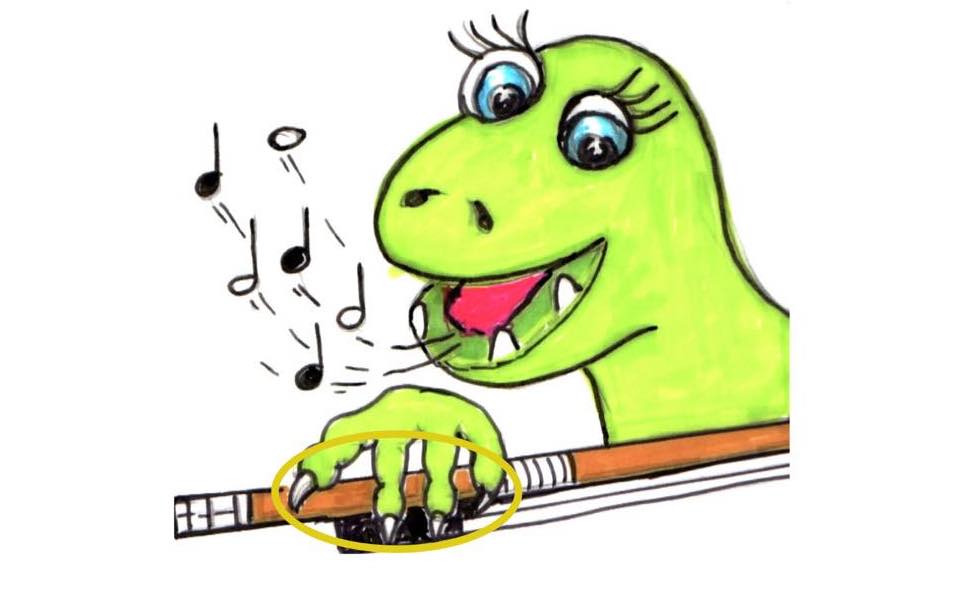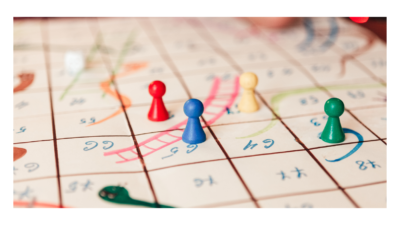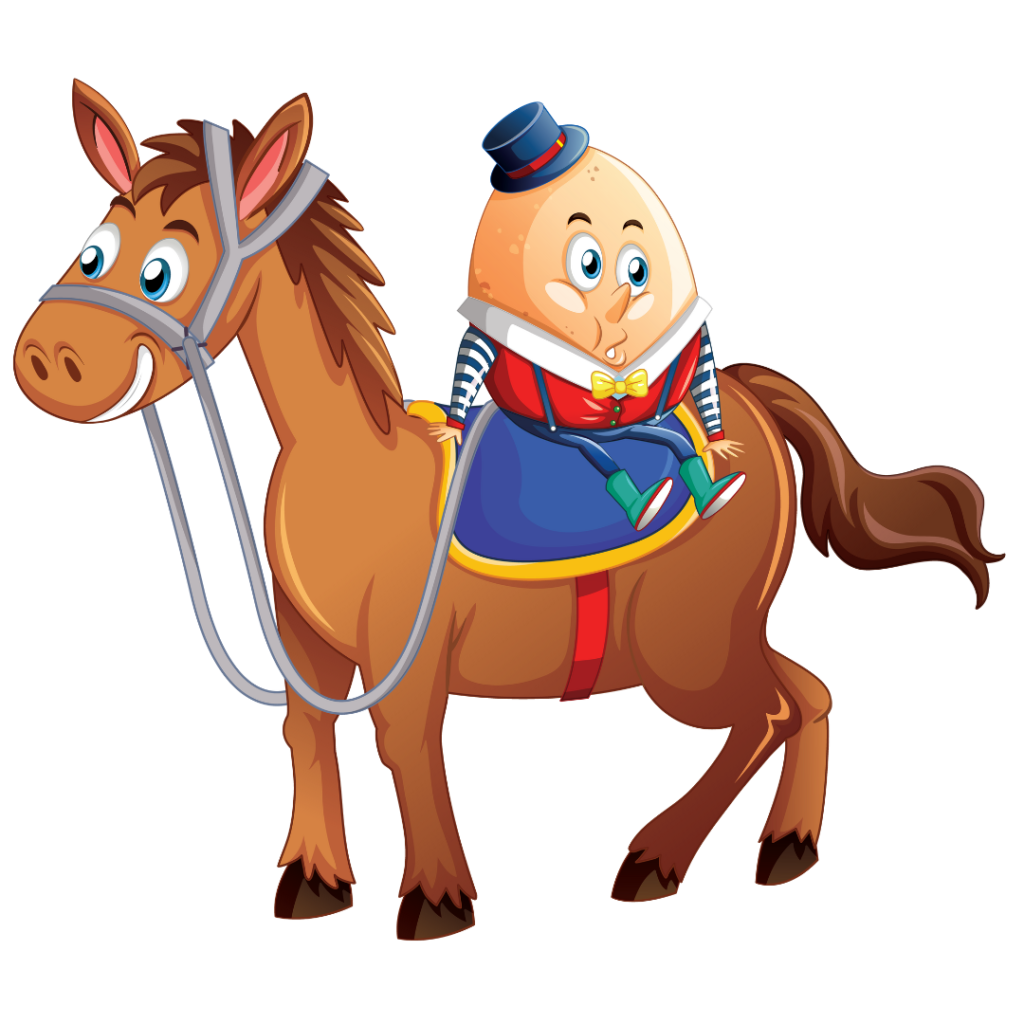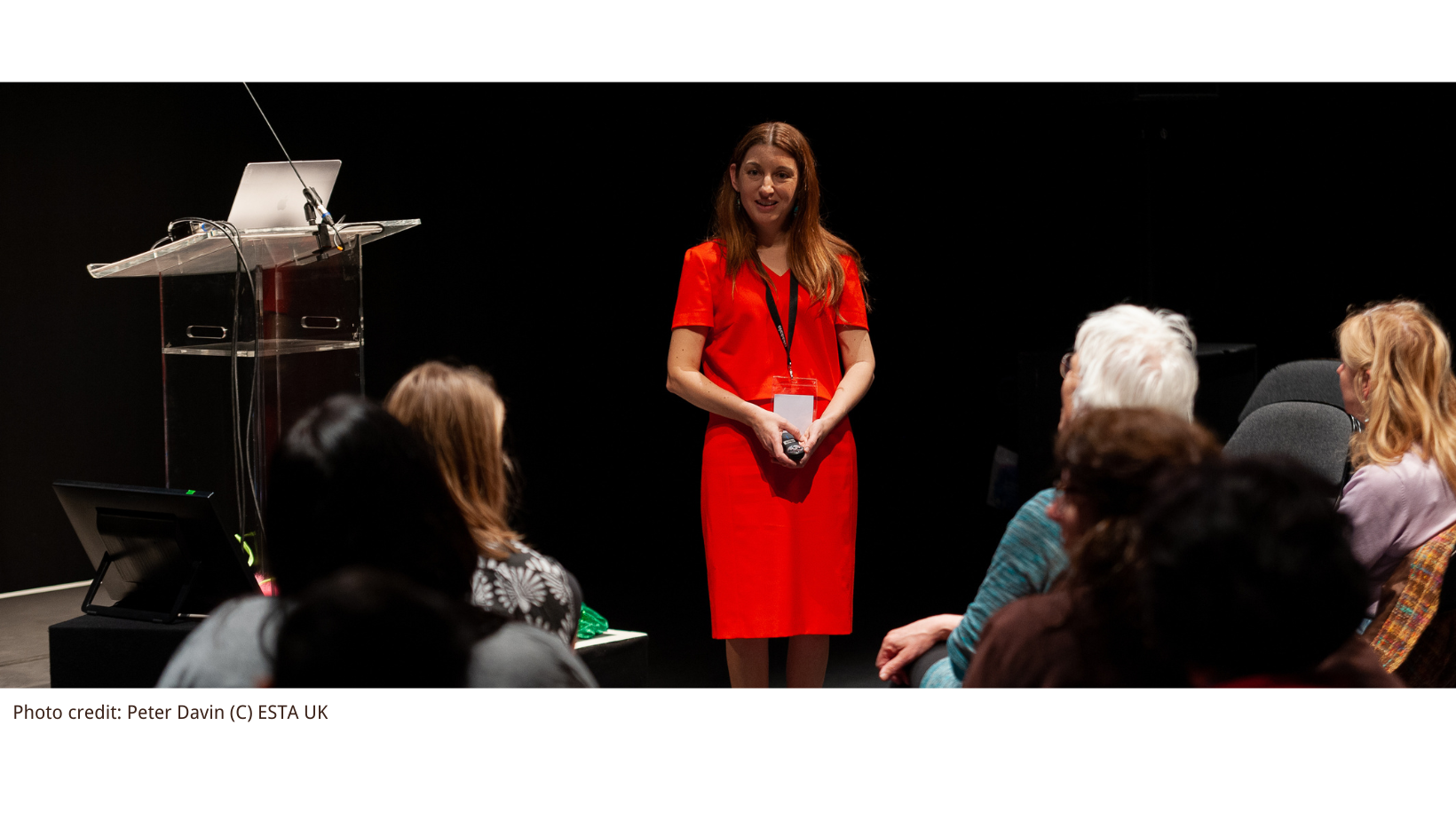20 Beginner Violin Myths Busted
Busting the Top 20 Myths About Your Child’s String Instrument Journey
Guest author Laura Carr, amazing violin teacher specialized in teaching very young violinists and creator of Stringosaurus resources hub, will bust some very sticky beginner violin myths to set your child up for success (and lots of fun) on the violin.
How we wish you knew!
Allow me to introduce myself, I’m Laura Carr—an experienced and highly respected violin educator, renowned for creating a bespoke library of early childhood teaching materials (Stringosaurus), and sought-after as an international presenter and clinician.
Throughout my global connections with string teachers, I’ve discovered something crucial: there are THINGS THEY DESPERATELY WANT YOU TO KNOW. However, the constraints of time and resources often prevent them from communicating all these valuable insights to you.
In this article, I’ve compiled everything we wish you knew. Consider it a treasure trove of knowledge that can be a real game-changer, enriching your child’s musical journey and making it a lifelong passion!
Busting the Top 20 Myths
About Your Child’s String Instrument Journey!

1. Myth: Any cheap instrument will work well enough for a beginner
Unfortunately, a poorly set up, poorly sized, and poorly crafted instrument will turn your child’s learning journey into a miserable experience.
E.g. Particularly cheap violins don’t stay in tune, have an awful sound, and are notoriously difficult if not impossible to play on, even for a professional, as they are made using poor workmanship, dimensions and materials.
Solution:
Rent a good student instrument from a reputable music shop. Take your child in and measure them up so they have the correct size for their build. Having a size too big can create injuries and ultimately, an uncomfortable child won’t enjoy their learning.
Let’s ensure a correct set-up from the start so your child can thoroughly LOVE learning!

If you still want to purchase an instrument, be sure to chat with your child’s teacher first. Get the best you can afford with their guidance.
2. Myth: Doing Countless Numbers of Activities Won’t Affect Learning
It’s natural to want to expose your child to a variety of activities. However, it’s essential to consider how these activities may impact their learning.
Finding a balance between extracurriculars and music practice is key. While exploring diverse interests is valuable, overloading schedules might lead to fatigue and hinder progress in their musical journey.
Solution:
Consider a manageable schedule that allows adequate time for focused and enjoyable practice. By striking this balance, your child can flourish in both their music learning and other activities without feeling overwhelmed.
3. Myth: Screechy Starts? Not Necessarily!
Who said it has to sound screechy and horrible at the beginning? Let’s break the myth! Once you understand the science of playing, allowing the wood and strings to resonate freely, beautiful sounds can be created.
Solution:
Some teachers ask for children to seek out all the nasty noises they can on their instruments, because if they know how to make them, it’s easier to know how to not make them!
With the right kind of guided practice, listening carefully to your child’s teacher, and having a good instrument, your child can avoid cat howling noises and make pleasant sounds in no time!

The key to a beautiful sound is to practice with your child, supporting them and following their teacher’s direction.
4. Myth: Children will remember to just go and get their instruments out without being reminded, especially if they love learning
When I was little, I ADORED learning the violin. However, my mum still needed to remind me and gently encourage me to get my violin out on most days.
5. The Myth of Independent Practice -Unlocking the Power of Together
Life can get hectic, and as teachers/parents/carers, we understand the juggling act all too well. Balancing multiple commitments can feel like a high-wire act without a safety net. In the midst of it all, it’s easy to forget that our younger children are still learning and growing, and most do not yet have the ability to know how and what to practice on their own.
Solution:
Your presence is the secret sauce to your child’s enjoyment and progress! Young musicians rely on their adults to be fully engaged during practice time. By embracing this precious time together, you become the guiding hand that nurtures their musical journey. This may feel daunting, but just wanting to help and support your child is the first step towards their success.

Discuss with your child’s teacher how you can best be an advocate and support in their musical journey.

6. Myth: Penciling in Practice = Practice Happens
Penciling in practice is the first step to creating a time to practice, BUT more importantly, practice needs to be PRIORITISED.
Sometimes, we feel overwhelmed, our child seems exhausted, so even if practice is pencilled in, we may not prioritise it and then that moment is missed.
Don’t feel bad or guilty. You’re trying your best. One missed practice isn’t an issue, but two or three may become a habit. Just prioritise the next practice.
Solution:
Regular small bursts of practice that are joyful and fun are better than the odd long sporadic practice. Children are developing muscle memory, so small amounts of practice are ideal to avoid tension and muscle fatigue.
Practicing little and often is key. Prioritize practice and make it as joyful as possible. Empower your child by giving time.
7. Myth: Learning “Just for Fun” Doesn’t Entail Work Outside of Lessons
Remember those days in school when you struggled with a subject? Did you find yourself loving it even more or growing anxious and disliking the idea of having to do it?
Stringed instruments are renowned for being challenging, so the only way to get a deep satisfaction of learning and a feeling of proficiency and fun is to practise outside of lessons.
8. Myth: Improvement is Linear
Improvement will be happening in proportion to practice but not necessarily be audible until several skills are improved.
9. Myth: Almost Everybody Underestimates How Slow “Progress” is at the Start
Non-teaching grownups may have different perceptions of progress and may be confused as to why they can’t see big improvements. All those little milestones that we celebrate as teachers don’t necessarily translate to the parent’s/carer’s or player’s ears, especially in the early days.
10. Myth: Playing a String Instrument is Just an “Activity” for 30 mins of Lesson Time
In order to progress daily/regular quality practice is essential.
Just like in snakes and ladders, progress involves ups and downs on your journey. Keep going!
-Laura Carr

11. Myth: Taking 3 Months Off Over the Summer Won’t Affect Progress
We completely understand that summer break is a much-needed time for relaxation, fun, and family bonding. Taking a break from the routine is essential for rejuvenation. However, we’d like to share some insights about the impact of an extended break from learning their stringed instrument. When a three-month hiatus occurs, it’s natural for some of the progress achieved during the school year to fade away. Learning an instrument is a skill that benefits from consistent practice, and an extended break may result in some loss of proficiency.
Solution:
- Shorter, Consistent Practice: Instead of daily long practice sessions, consider shorter, more frequent sessions during the summer. This way, your child can maintain their skills without it feeling overwhelming.
- Fun Musical Activities: Encourage your child to engage in fun musical activities during the break. They can explore playing familiar tunes, experimenting with creative improvisation, or even composing their melodies. This keeps the joy of music alive!
- Music Camps or Workshops: Look for summer music camps or workshops in your area. These can be a great way for your child to continue learning in a fun and supportive environment while making new friends.
- Instrument Exploration: Summer can also be an opportunity to explore different aspects of their instrument, such as its history, famous musicians, or the physics of sound. This enriches their musical knowledge.
- Setting Goals: Before the break, set achievable musical goals together with your child. It can be learning a new piece or mastering a challenging technique. Having goals will keep them motivated and focussed.
12. Myth: Hiring a Teenager to Teach a Beginner is a Great Way to Start
We understand that there might be a belief that hiring a teenager to teach a young beginner in strings could be a viable option, especially if they have some musical knowledge. However, we’d like to shed light on why experience plays a crucial role in a child’s early musical education.
Teaching a beginner is a delicate process that requires not only musical expertise but also a deep understanding of child development and effective teaching methods.
Experienced teachers possess the knowledge and skills to tailor lessons to the individual needs and learning styles of young students, fostering a strong foundation for their musical journey.
Solution/Ideas to Ponder:
- Pedagogical Expertise: Experienced teachers have dedicated years to mastering the art of teaching. They can employ various techniques and approaches that engage young minds and nurture their musical growth.
- Patience and Encouragement: Teaching young beginners requires exceptional patience and encouragement. Experienced teachers have honed these qualities, creating a positive and supportive learning environment.
- Technical Knowledge: Learning a string instrument demands precise techniques for proper posture, hand position, and bow control. Seasoned teachers can guide students with accuracy and finesse.
- Long-term Vision: While a teenager with some musical knowledge might be enthusiastic and helpful, they may lack the comprehensive understanding of a child’s long-term musical journey.
- Safe Learning Environment: Experienced teachers ensure that young beginners develop correct playing habits, preventing potential physical strain or injuries in the future.
Our intention is not to pass judgment but to emphasize the significance of expertise in shaping a child’s musical experience. Engaging an experienced teacher from the outset can lay a strong foundation for your child’s musical growth and instill a lifelong love for strings. We believe that investing in quality education early on will set the stage for a remarkable musical adventure!
13. Myth: Only Naturally Talented Students Will Succeed
As parents/carers, we naturally wonder about our child’s potential and talent. When it comes to learning a stringed instrument, it’s essential to understand that talent is only a tiny fraction (if any) of the equation. Most talent that I’ve seen is created by environmental factors and dedication.
Here’s how we can foster a growth mindset and create the right environment for success:
- Encouraging Effort: Emphasize that effort and dedication are far more critical than innate talent. With consistent practice and perseverance, any child can make remarkable progress.
- Cultivating Curiosity: Encourage curiosity and exploration of music. Let your child experiment with various instruments and genres, allowing them to discover their passion.
- Celebrating Progress: Acknowledge and celebrate every milestone achieved. Progress might be gradual, but it’s a testament to their hard work and commitment.
- Setting Realistic Goals: Help your child set achievable goals, both short-term and long-term. Celebrate their accomplishments, no matter how small.
- Nurturing a Love for Music: Create a supportive and nurturing musical environment at home. Listen to music together, attend concerts, and share the joy together.
- Seeking Guidance: Enroll your child with a skilled and experienced teacher who can provide proper guidance and support in their musical journey.
- Encouraging Exploration: Let your child explore different aspects of music, such as composition, improvisation, and music theory. This broadens their understanding and passion for music.
- Emphasising Practice: Explain that regular practice is the key to improvement. Encourage them to view practice as a positive and enjoyable process.
- Fostering Perseverance: Remind your child that even the greatest musicians faced challenges and setbacks. Encourage them to persevere through difficult times.
- Celebrating Effort, Not Perfection: Praise the effort they put into practice and learning, rather than solely focusing on perfect performances.
Remember, every child’s musical journey is unique. By providing a nurturing environment, celebrating their efforts, and promoting a growth mindset, you’re laying the groundwork for a lifelong love for music. With the right attitude and dedication, they can achieve greatness beyond what they might have initially thought possible.
14. Myth: Your Young Child Needs a Violin to get Started
No Violin, No Problem! Start with a DIY Practice Setup
Younger children can kick off their musical journey without a physical violin. Create a homemade box violin or foam violin and use a dowel or pencil as the bow. It’s a fun and playful way to begin practicing essential techniques before diving into the real instrument!
15. Myth: It Won’t Take Long to Play Songs/Pieces We Know and Love
It’s essential to understand that your child’s musical journey takes time and patience. At the beginning stages, they might not play a whole song right away, and that’s perfectly normal.
Expect them to focus on open string pieces, where they’ll learn crucial foundational skills like proper bowing and instrument placement.
Just like building a sturdy house requires a strong foundation, learning a stringed instrument demands mastering these basic techniques. Embrace this process, as it sets the stage for their future melodic masterpieces.

Learning a simple song/piece of music on a stringed instrument takes much longer than most people realize.
Trust that it will all fall into place and be patient.
16. Myth: Easy on One, Easy on All? Not Quite!
Learning a stringed instrument takes more time and effort initially compared to piano, flute, or recorder. Unlike these instruments that produce immediate melodies, strings have a gradual and challenging learning curve. Patience and dedication are required to build the foundational skills for beautiful melodies. The initial journey may take longer, but the rewards of mastering a stringed instrument are truly remarkable.
17. Myth: Private Lessons and Talent
It’s crucial to debunk the myth that suggesting private lessons means your child lacks talent or can’t succeed in group classes. Private lessons offer unique benefits that complement and enhance the group learning experience.
Here’s why:
- Personalized Attention: In private lessons, your child receives focused, one-on-one guidance. The teacher tailors the instruction to their specific needs, accelerating progress.
- Addressing Weaknesses: Private lessons help target and address individual challenges, turning them into strengths. It’s like a customised musical roadmap for success.
- Building Confidence: With personalised support, your child gains confidence in their abilities, positively impacting their performance in group settings.
- Extra Support, Not Lack of Talent: Private lessons act as a supplemental boost, not an admission of inadequacy. They provide extra help to maximise potential, even for the most dedicated students.
- Amplifying Group Learning: The combination of private lessons and group classes creates a well-rounded musical education, fostering both technical prowess and collaborative skills.
So, let’s reframe the narrative. Suggesting private lessons is a testament to your belief in your child’s potential and commitment to their musical growth.
Embrace this harmony of learning options and watch your child’s musical journey flourish in ways you never thought possible!
18. Myth: The Instrument, the Teacher, and the Community Culture Surrounding the Child Aren’t All Inevitably Essential
It’s important to know that the instrument, teacher, and community culture are essential elements of your child’s learning journey, not forgetting that the MOST important element in this process is your child.
- Instrument Choices: While selecting a suitable instrument is crucial, it doesn’t mean there’s only one right choice. Exploring options and finding what resonates with your child’s passion is key.
- Teacher Impact: A skilled teacher can make a significant difference, but different teachers can bring unique approaches. Finding one who connects with your child’s learning style is beneficial.
- Community Support: An encouraging musical community is valuable, but it can take various forms and will always start with you! It takes a village to raise a child and it takes an even stronger village to raise a child to play a string instrument!

Mum knew what she was doing, and I’m forever grateful for her wisdom and support!
19. Myth: The Child Should Only Play the Instrument They Really Want to Play From the Beginning
When I was around 7 years old, I pleaded with my mum for a violin. I couldn’t wait to start playing as I loved how the sound made me feel. Christmas morning arrived, and I excitedly unwrapped a gift, only to find a recorder inside. I looked at my mum, feeling a mix of surprise and confusion. “But I wanted a violin,” I said.
My mum smiled and explained her plan. She wanted me to learn the basics on the recorder first, to build my music reading skills. If I could master the recorder, she promised to consider getting me a violin. I realised that she had a clever strategy to help me become a well-rounded musician.
20.The Joyful Truth: Playful Learning Enhances Progress
Let’s dispel the myth that making string lessons playful means your child isn’t learning as much. On the contrary, infusing playfulness into the learning process can enhance their progress and musical development in remarkable ways.
Here’s why:
- Engaged Learning: Playful lessons capture your child’s attention and enthusiasm, fostering an engaged and curious mindset. When they’re excited about the lessons, they’re more likely to absorb and retain information.
- Memory and Retention: Playful activities stimulate various parts of the brain, promoting better memory retention. Your child will remember concepts and techniques more effectively through fun experiences.
- Positive Association: By associating music with enjoyable moments, your child develops a positive attitude towards their instrument, leading to long-lasting passion and commitment.
- Creative Expression: Playfulness encourages creative expression, allowing your child to explore their musicality and unique voice on the instrument.
- Confidence Boost: When your child enjoys the learning process, their confidence soars. This positive reinforcement strengthens their skills and motivates them to excel.
- Multi-Sensory Experience: Playful learning often involves using multiple senses, providing a richer and deeper understanding of music concepts.
So, let’s embrace the magic of playful learning! When we combine joy and education, we create a harmonious environment for your child to flourish as a string musician.
Remember, their laughter and smiles are the sweet sounds of progress!
I hope that you now feel empowered, uplifted and excited for your shared learning journey.
I admire you as I know it won’t always be easy, but dig down deep and you will pull through. Just keep remembering the reasons why you are embarking on this journey. Write them down, pin them up on the wall, stick them on the fridge.
My mum was an inspirational support to my sister and I on our journeys. We both LOVED playing and practicing our violins, but we still needed our mum’s guidance and patience as we were prone to the odd meltdown!
Hang in there! Your child’s teacher sent you this article (perhaps) because they want to support YOU and your child. They will be there for you if you ever need guidance… just reach out.
Thanks for reading this. We believe in you.
Love,
Laura
Creator of Stringosaurus, early childhood violin resources hub

You are a vital piece of the puzzle… Thank you for your incredible support and dedication to your child’s musical education.

Hi! I'm Zlata
Classical violinist helping you overcome technical struggles and play with feeling by improving your bow technique.
Closing note by Zlata
After teaching violin for over ten years, I thought I knew what to do when my own children would start the violin. Well… I wasn’t prepared that they would want to ‘play like mama’ from the age of 1,5 years old. This is when I met Laura and I started my journey as a ‘Teachosaurus’ and member of her online resources hub Stringosaurus.
After MANY hours of watching her videos and playing along with my own (now five under five) kids, I can highly recommend what she’s offering. You can seamlessly combine it with any method you’re currently using.
If you have little ones who play violin or you are a teacher who wants to teach early childhood violin, click here and explore the wonderful world of Stringosaurus.


Interested in learning violin